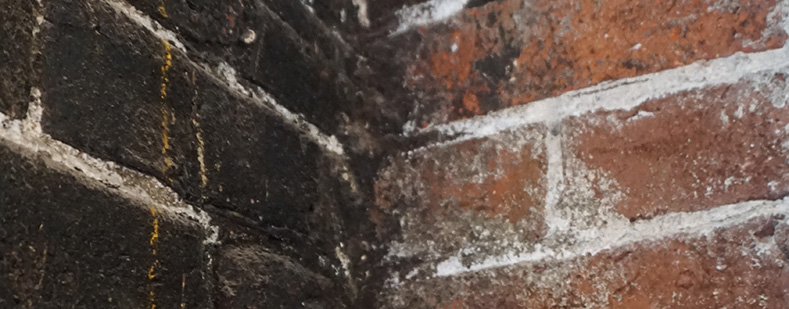Fires can happen anywhere. While the cause of fires vary, every year thousands of homes, commercial properties, and industrial facilities deal with the cleanup after a blaze. In the aftermath of a fire, structural engineers and insurance companies will work together to determine if a property can be salvaged. In many cases, a fire restoration specialist will work with the owner to resurrect the property from the ashes.
After a fire, combustible construction materials and drywall may need to be replaced, but wood beams and masonry surfaces like concrete and brick can frequently be cleaned if deemed structurally sound.
The approach a fire restoration specialist takes to remove soot from brick can be different depending on the cause of the fire, how long it burned, what the fire consumed, type of fire damage, and where the soot accumulated. These factors, plus the amount of square footage damaged will determine the recommended cleaning methods. Fires that involve diesel fuel, plastics, rubber, or other petroleum based products typically create an oily soot while fires that involve wood and other construction materials can leave fine powder residue.
Three options for cleaning soot from brick include:
Chemical Peelers or Pastes
Soot Removal Peelers and Pastes are applied in a liquid, gel, or putty form that then hardens, taking the soot with them when removed from the brick. Soot removal systems designed to peel off may need multiple applications to completely remove the soot. This method of removal is best used for smaller areas such as chimneys and mantels. This is typically better for smooth surfaces as it can be challenging to remove hardened material from the brick’s pores.
Liquid Based Cleaning Systems
For smaller projects, liquid-based cleaning systems are often paired with manual scrubbing to loosen and wipe away the soot. On larger projects, liquid cleaners are used with pressure washers to displace/remove soot. For industrial manufacturing processes that generate soot, facility owners will often use pressure washers during routine maintenance periods.
Brick is particularly susceptible to water absorption and subsequent damage. Caution should be used when pressure washing brick with liquid cleaning products, as they can penetrate porous masonry products (including mortar and brick) which can lead to material breakdown and deterioration.
Industrial sites like ethanol plants remove soot and other carbon buildup during planned stoppages. Historically, these plants will use pressure washing or ultra-high pressure water blasting. Ethanol facilities face challenges containing and disposing of the runoff created from water-based removal methods. In recent years, many ethanol plants have transitioned to dry soot removal processes like Sponge Blasting.
Micro-Abrasive Cleaning
Micro-abrasive cleaning with Sponge Media is a dry option that cleans the surface soot without the need to deal with liquid runoff. Sponge Blasting is one of the faster methods of soot removal. If removing only soot, typically very little dust is generated. Production rates will vary depending on the type and thickness of the soot, but often soot removal is very quick. More than 100ft² (10m²) per nozzle-hour is very common.
Selection of the best Sponge Media depends on the goals of the restoration specialist, the substrate, and the adhesion qualities of the soot. Some Sponge Media can remove just soot, while other media can be used to remove both paint and soot from brick.
To learn more about removing soot from concrete, visit: https://blog.spongejet.com/how-to-remove-soot-from-concrete








